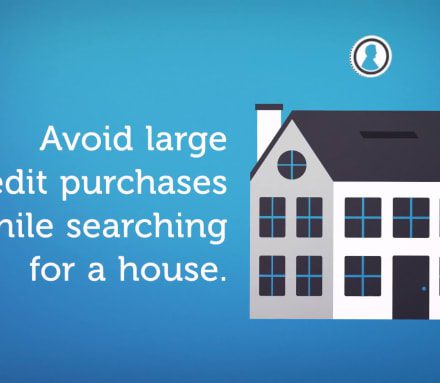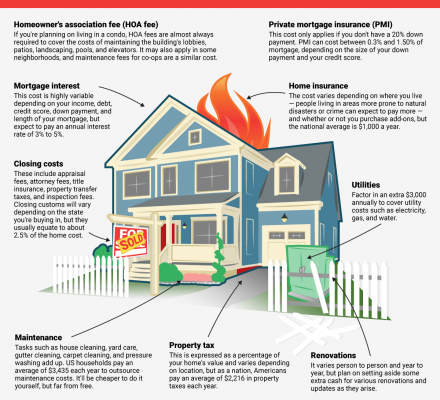We typically grow up hearing that all you need to become wealthy over time is to get a great education, get a job, and save money. However, even if the most dedicated person takes this path, they will likely fail at attaining the life they dream of. Nevertheless, there is a way in which people can attain this dream, and that is via real estate investing.
In discovering how to become a real estate investor, you will learn various strategies involved in real estate investing. First off, it is important to highlight what multi-family real estate investing is.
How to Become a Real Estate Investor: Multi-Family Real Estate Investing
Investing in real estate is purchasing real estate, which will be used to generate rental income. Real estate investing is considered a great asset class, perfectly suited to individuals that want to develop a balanced investment portfolio.
Various benefits are associated with investing in real estate compared to other asset classes. Real estate investments provide continuous and positive cash flow, tax advantages, and appreciation potential. Due to tax deductions like depreciation, real estate is seen as one of the best tax-advantaged investment assets.
How to Become a Real Estate Investor for Multi-Family Real Estate
Most individuals wrongly believe the only way to invest in real estate is to completely purchase the property. Since most banks and other financial lenders require a minimum of 20% in down payment to purchase a real estate investment property, they tend to believe this form of investing is simply impossible.
With this train of thought, people believe that they will have to become landlords, a role that most people have no interest in undergoing. However, this couldn’t be farther from the truth, as there are various ways to invest in real estate, both passively and actively. The following are four of the most popular ways on how to become a real estate investor:
Multi-Family Real Estate Developments
This is yet another method to invest in real estate. Real estate development can come in various forms, including value add investing and ground-up development. Value add investing is a type of real estate development in which a less than desirable building is purchased.
Significant improvements are made to the building to increase its rental or occupancy rates. Ground-up investment, on the other hand, is when a real estate investor purchases vacant lots or perhaps buys a lot with a building to be demolished.
Interested in joining a multi-family development? Find out more here.
Flipping Houses
One of the most active ways to become a real estate investor is by flipping houses. Certain circles believe flipping houses isn’t any investment strategy; rather, it is a career or business. When you flip a house, you purchase properties that require some renovation or repairs and then conduct the renovations before selling the property for profit.
Most flips last 6 to 12 months after the initial purchase, which makes the required repairs and workload intense. Some real estate investors personally get involved in the process of flipping new homes they purchase, while others simply purchase the buildings and hire a general contractor to perform the renovations.
Purchase Multi-Family Properties
Purchasing rental properties can be a great way to invest in real estate and potentially become a successful investor. You can purchase a two to four multi-family unit complex, which can earn you money via rent.
Some real estate investors begin their journey by owner-occupying a multi-family property. This allows them to get extremely appealing financing while taking small steps toward becoming a landlord.
You should note that investing in multi-family rental property isn’t solely limited to just residential property. You can purchase warehouses, offices, industrial, retail, and many other spaces to earn rental income. Regardless of the property you buy, purchasing a rental property is something you can do passively or actively.
When you choose the active method of investing, you will have to set out time to manage the rental property. This is why most investors outsource the daily responsibility of managing a property to an outside property management agency.
The property management agency takes over obligations such as showing the units, obtaining credit checks on potential tenants, overseeing repairs, collating rent checks, and maintenance.
REITs
You can invest in real estate passively via a REIT or Real Estate Investment Trust. A REIT works in the same manner a mutual fund does. You purchase stock in a real estate portfolio actively managed by professionals. Federal regulations state that REITs must return 90% of the profits they generate to investors.
A benefit of purchasing shares in a REIT is that you can purchase and sell the shares at any time with no restrictions. This makes investing in a REIT a great proposition for those that want to preserve liquidity. You should note that they tend to offer a lower return on investment compared to direct investing. Furthermore, they don’t come with any tax benefits.
Guide on How to Become a Real Estate Investor
The following is a guide on how to become a real estate investor for multi-family real estate.
Recognize Your Funding Source
The first thing you need to do is to identify the capital you intend to invest. Most individuals use their savings when investing in real estate for the first time. As soon as they have a bit of equity in their first endeavor, the investors can leverage said equity to buy more properties. This is how most real estate investors grow their portfolios over the years.
There are two major types of real estate funding; there are 2 major types: debt financing and equity financing.
Almost every real estate investment requires debt financing. Taking a bank loan is one of the most conventional forms of debt financing. A real estate investor can also get a loan from pension funds, private lenders, and insurance companies.
Most real estate projects have one or more general partners and various limited partners. Both sets are responsible for collectively placing the deal’s equity. General partners take on an active role in the investment, while limited partners simply invest and then become passive participants.
Develop an Investment Strategy
As highlighted earlier in the article, there are two unique real estate investment strategies: active and passive. With active investing, you are directly participating in the entire process. This means your capital, time, and risk are involved.
When investing passively, you put in the capital and let others handle your real estate investment’s daily operation and management. While this method typically generates income slower than actively, it offers a consistent source of income and comes with various tax advantages.
Recognize Your Market
Once you understand how you intend to invest and where the capital will be sourced, you can identify your target market. For instance, you can choose to invest in larger cities, which are primary markets, as they provide a safer investment opportunity for your capital. Real estate in these primary markets tends to hold its value, especially over various real estate market cycles.
Nevertheless, purchasing real estate in these markets can be expensive, resulting in a lower return than in higher-risk secondary markets. Most real estate investors prefer to invest their capital in secondary or tertiary markets, particularly those priced out of primary markets.
Purchasing properties in these markets is much cheaper, resulting in lower entry barriers. Nevertheless, real estate in these markets is a lot more influenced by real estate market swings, making any investment opportunities potentially riskier. This higher risk means there is a potential for even greater rewards, making investing in the secondary and tertiary markets much more appealing.
How to Become a Real Estate Investor: Things to Remember
While various benefits are associated with investing in real estate, the process isn’t foolproof. You need to understand that investing in real estate comes with certain risks, such as the following:
Property-Specific Risk
When you invest in real estate, you should be conscious that there is a chance something might not work with the property. For example, the vacancy rate might be unusually high. You could have a delinquent tenant, or perhaps a major component such as the HVAC would require replacement. Owning real estate comes with this level of risk, and you should be aware of it.
Asset Level Risk
You should note that there are certain risks associated with some asset classes. For instance, real estate investors who bought shopping centers and malls a few years ago are now struggling with high vacancy rates due to consumers moving to internet shopping.
You should also note that hotels are also susceptible to this level of risk, as they are dependent on consumer travel and spending. The least prone to risk happens to be multi-family and industrial properties.
General Real Estate Market Risk
This happens when the economy softens, causing property values to depreciate. If your leverage is extremely high, you can quickly fall behind on your mortgages, which can cause you to default on the loans.




